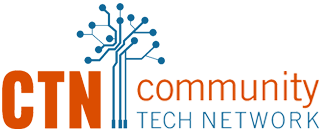When we say the phrase “digital divide,” we often think of its immediate implication: that some people lack access to the internet. Yet it’s important to think of technology in context. Digital tools are critical for accessing information and social services, pursuing education and job opportunities, using healthcare and communication platforms, and fully participating in society. The same people who are excluded from internet access have been excluded from other social and economic benefits. In other words, lack of access doesn’t just create inequities; it also amplifies the inequities that already exist.
While the residual effects of the digital divide bleed into our social infrastructure — hindering economic development, affecting health and well-being, and limiting access to important resources in some communities — limited access to important health and financial resources has existed for generations. Discriminatory practices such as digital redlining and failures in the broadband market (PDF), which create additional barriers to the online world, are a legacy of discriminatory practices established long before the Internet existed. As a result, lack of digital infrastructure and skills can exacerbate long-standing social and economic inequities — especially among communities of color.
According to Pew Research’s 2021 Survey, Black and Hispanic adults in the U.S. remain less likely than White adults to report owning a traditional computer or having high-speed internet at home. While 80% of White households have a broadband connection at home, this statistic falls to 71% and 65% among Black and Hispanic households.
If we want to create a more equitable and inclusive society, increasing people’s access to and use of the internet is crucial. As summed up by a recent Brookings Institution report:
Cities and states with racial disparities in health and economic status face a choice: Let broadband become just another marker of racial inequity, or make the choice to support and empower communities of color through equal access to affordable broadband and the digital skills to use it.
Throughout San Francisco — a city with a thriving tech sector — significant gaps remain in basic digital infrastructure. According to SF’s Digital Equity Strategic Plan (PDF), about one in eight San Franciscans lack high-speed internet access at home, and one in seven lack basic digital literacy skills. These gaps widen along racial and ethnic lines, with 81% to 83% of Black and Latino residents using the internet compared to 96% of White residents.
To tackle the city’s racial digital divide, Community Tech Network collaborates with community partners to prioritize historically underserved and socioeconomically excluded populations. Since our inception in 2008, we’ve remained committed to the belief that everyone deserves access to the internet and the skills to use it. Oftentimes, this requires that we provide extra support to those who have been excluded from the digital world — whether by connecting people to low-cost internet services, providing them with a free digital device, or adapting our training curriculum to meet unique needs.
In the Bayview neighborhood — where about 18% of residents lack internet access — we’ve partnered with the George W. Davis Senior Center to offer digital literacy classes to seniors enrolled in the Comcast Internet Essentials program. As a part of our partnership with the California Public Utilities Commission, we work with community centers like the West Side Courts and the Tabernacle Community Development Corporation to offer skills training and free devices to adult residents in the Western Addition. In the Tenderloin — where about 30% of residents lack high-speed internet access — we’re working with the Curry Senior Center and Hamilton Families to bring relevant digital skills training to new tech users.
By centering our digital equity model on partnership with long-established nonprofits and social service agencies working to disrupt systemic inequities, we can better understand community-specific needs and create culturally-responsive strategies to pursue digital equity.
While digital inclusion is not a silver bullet solution to San Francisco’s racial inequities, we do know that broadband is incredibly important to people’s physical, social, and economic health. It’s our goal to lower the barrier to entry to the digital world and empower communities to prosper with the tools of technology.


Comments are closed.